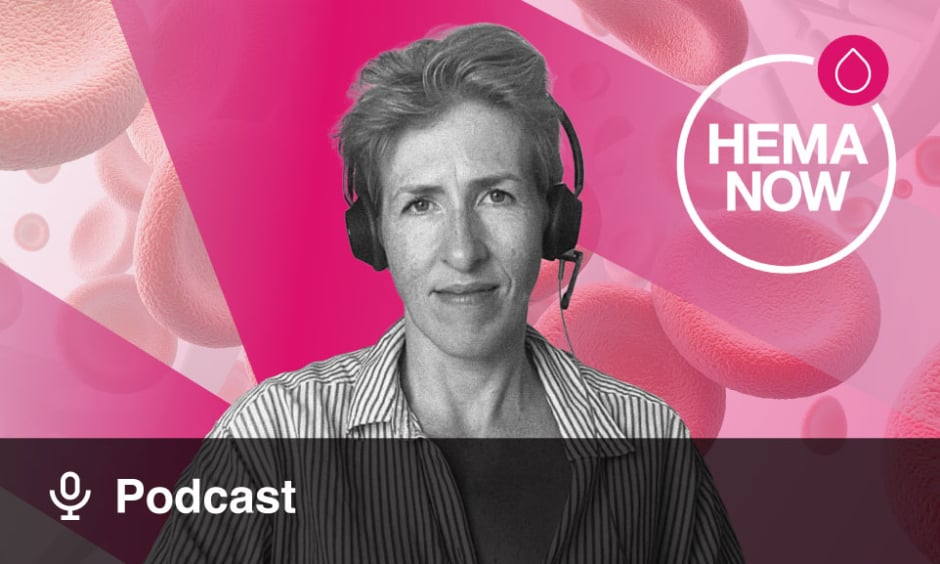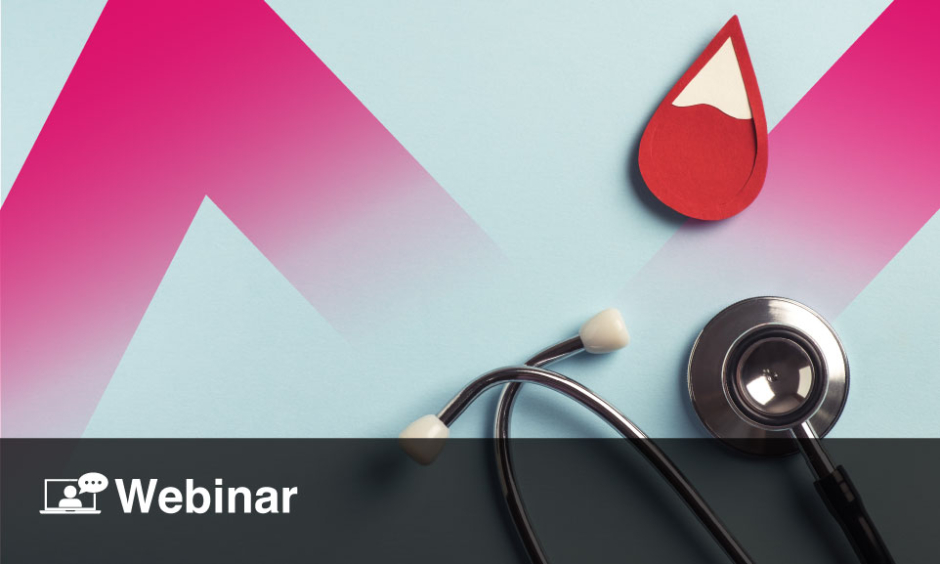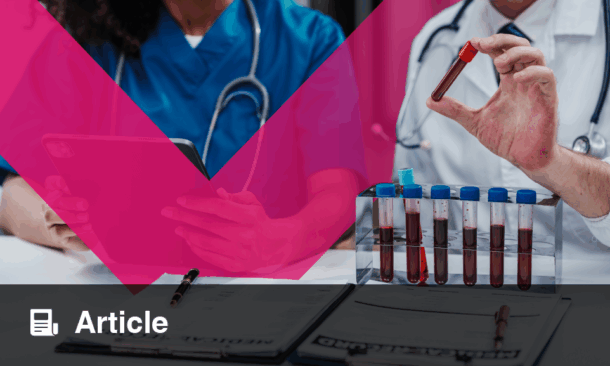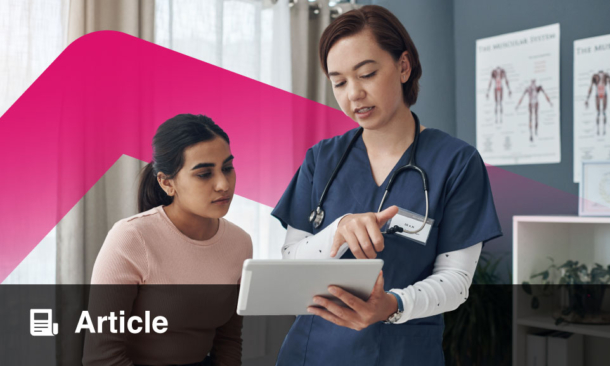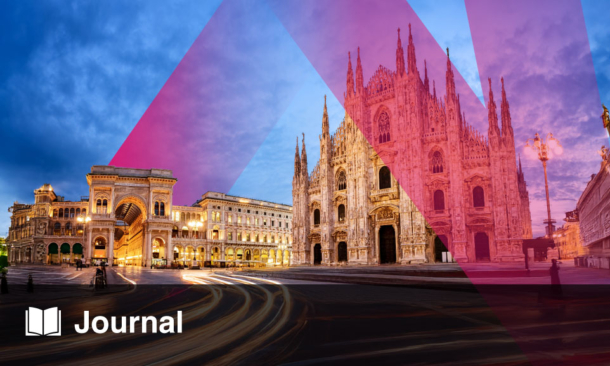Elizabeth Macintyre | President of the Biomedical Alliance, Europe; and Past President of the European Hematology Association (EHA)
Citation: EMJ Hematol. 2024;12[1]:53-58. https://doi.org/10.33590/emjhematol/PGQP6795.
![]()
As the Head of the Hematology Laboratory at Necker–Enfants Malades Hospital for over two decades, what were some of the major challenges and achievements you have experienced?
Since starting in 1992, I’ve witnessed significant advancements in diagnostics. My background includes clinical and laboratory haematology from my time in the UK, but I transitioned to focusing on diagnostics. Upon my arrival, I was asked about my plans, and I responded, “I’m going to establish molecular diagnostics.” Initially, there was scepticism about whether I had the courage to take on such a task. However, today, it’s unimaginable to diagnose haematological malignancies without a molecular approach.
We successfully set up molecular diagnostics within the hospital diagnostic lab, benefiting immensely from a close collaboration with the research lab. This synergy was crucial; one could not have advanced without the other. In France, we are fortunate to have mechanisms that allow us to conduct innovative diagnostic work within our hospital budget, which has made a substantial difference.
How has the research at the Hematology Laboratory at Necker–Enfants Malades Hospital evolved over the years?
Our research at the Hematology Laboratory primarily focused on lymphoid malignancies. Early in my career, I worked in immunogenetics and was at the forefront of minimal measurable residual disease (MRD) detection. I pioneered the quantification of clonal immunoglobulin and T cell receptor gene rearrangements for MRD detection in lymphoid malignancies. Although I am an adult haematologist, working in a paediatric hospital connected to an adult hospital has been beneficial. An adult haematologist initially brought me in, but a paediatrician from another hospital asked if I could implement MRD for paediatric acute lymphoblastic leukaemia. This led to the parallel development of oncogenetics and immunogenetics in our research.
Over the past 30 years, we’ve combined these approaches to identify specific characteristics of cancers that can be targeted for therapeutic purposes, which has been a fruitful area of research. We’ve focused on immature lymphoid malignancies at the intersection of adult and paediatric leukaemia, with each area enriching the other. We have concentrated on T cell acute lymphoblastic leukaemia (T-ALL), which involves blood and bone marrow. However, some closely related cancers, known as T-lymphoblastic lymphoma, remain in the tissue. Despite their biological and genetic similarities, understanding why some metastasise to the bone marrow while others do not is a critical area of research.
France tends to prefer local approaches, but for rare cancers, centralisation is essential. We have gradually become a reference centre for molecular and cellular analysis of these disorders, recognising the importance of integrating cellular and molecular diagnostics. Our research success has depended on, in addition to exceptional scientists, two smart decisions made early on, in the 1990s: properly banking samples with the budget to conserve them and setting up a comprehensive database. These decisions were not great scientific foresight but rather sensible planning, enabling the scientific discoveries that followed.
Your current research focuses on immature T lymphoid leukaemia and lymphomas. Could you elaborate on the importance of this research and any recent breakthroughs your team has achieved?
Because we’re having this discussion during the European Hematology Congress in Madrid, I’d like to highlight two notable oral presentations from our group. Although I no longer lead the frontline research, I consider myself more of a mentor in the unit. I lead the research unit alongside Vahid Asnafi, who was once my PhD student and is now my superior in the hospital structure. He handles the hard science while I focus on public relations, making us very complementary.
At this year’s European Hematology Association (EHA) Congress, Guillaume Andrieu presented our team’s research on patients with T-ALL and NOTCH1 pathway mutations, which are associated with a favourable prognosis. Our goal is to leverage this positive prognostic subgroup to aid those with poorer outcomes. Examining pathway abnormalities is crucial because targeting individual genetic abnormalities in T-ALL is ineffective due to their vast genetic diversity. Unlike chronic myeloid leukaemia, which has a single targetable gene (BCR-ABL), T-ALL requires a pathway-based approach for therapeutic targeting. Andrieu’s presentation included findings on how the NOTCH1 pathway led to investigations into ferroptosis and metabolic disruption.
Another significant presentation at EHA, was given by Aurore Touzart, MD/PhD in our team. Aurore worked with Matthew Simonin, a paediatrician who did his PhD in our group, to develop an updated genetic classifier that allows one to stratify individual patients into what kind of treatment they should have, initially in T-ALL. A typical classifier will focus on reducing treatment for patients at low risk and targeting novel therapies for patients at high risk. Such approaches are increasingly being integrated into functional drug screening approaches whereby clinicians can decide which patient needs which treatment at an individual patient level. This year, Aurore presented an extension of this approach to T lymphoblastic lymphoma.
What motivated you to take on the role of president-elect at the Biomedical Alliance in Europe, and how has your experience with the EHA prepared you for your role at the Biomedical Alliance?
I have worked with EHA for a very long time. I joined the European Affairs Department at EHA, and I currently chair that activity. The EHA asked me to be their representative on the Biomedical Alliance in Europe. I may have been elected to the board of the Biomedical Alliance because I speak my mind, I speak English as my mother tongue, and I am also a woman, so I tick a few minority boxes. Sometimes we say, ‘See One, Do One, Teach One’, but I would say, ‘See One, Do One, Teach One, Organise or Regulate One’. We all know that health is a member state issue, but especially since COVID-19, there is increasing realisation that there are some things we can do better together, at European level, in health. Not working together on such aspects does not bear considering, especially with the current nationalist trends in Europe, born of fear of change, in my opinion. People are frightened of change, in general and in their professional practice. We can do so much together by working with the European Parliament and the European Commission, because the people who are writing the rules for Europe need to work with experts in the field. I firmly believe that for those of us that want the European health agenda to be the space we deserve and desire, we have to work for it. That is probably why I got so involved in Biomedical Alliance, because there are transversal issues that have enormous potential if we get them right, but dreadful alternatives if we get them wrong.
Can you discuss any collaborative projects or partnerships that the Biomedical Alliance in Europe is currently pursuing, and how these collaborations are expected to impact healthcare research and policy?
At the Biomedical Alliance in Europe, collaboration means working together on broad, cross-cutting issues rather than focusing on specific areas like cancer or ageing, which are handled by specialised scientific societies. Our primary interactions are with policymakers, lawmakers, and politicians. There are three main groups of policy advocates: industry, patients, and healthcare professionals.
The industry has strong advocates with close ties to governments, and patients have become effective advocates who are listened to by politicians because they are voters. The medical profession has long enjoyed a significant degree of trust, but this has been challenged in recent years. I believe it is essential for healthcare professionals to advocate as effectively as industry and patient representatives. Specialists often communicate only within their fields, making it difficult to convey their needs to lawmakers and politicians. If regulations don’t translate into benefits and/or are not feasible/reasonable for healthcare professionals, everyone suffers.
Our collaborations aim to facilitate clear communication in a multistakeholder format. The European Commission recognises increasingly that excessive regulation can be counterproductive. While regulations are necessary, they need to be streamlined, pragmatic, and comprehensible to all stakeholders to accommodate 27 different cultures under the same rules. Bureaucratic and regulatory zeal must be balanced with clarity and efficiency.
Moderation is key, even within a discipline. Whenever we start to write guidelines, we encounter variations in treatment approaches. Collaborative projects and partnerships at the Biomedical Alliance are crucial for creating a harmonious European health space. I often engage with non-healthcare professionals, to represent academic perspectives. We aspire to optimise multistakeholder communication and ensuing confidence in order to build a vibrant healthcare industry in Europe, providing equitable healthcare to all.
While we don’t set drug prices, medical specialists and educators must inform future and trainee doctors about the economic impacts of their actions. Using public funds wisely to prevent and treat diseases effectively, with minimal side effects and optimal costs, is vital. This starts with accurate diagnostics. Historically, the focus has been on the costs of therapeutics and medical devices, but diagnostics are becoming more expensive and crucial for targeted therapies, thus attracting interest from the for-profit sector and requiring regulatory surveillance.
A notable example is the Theranos disaster, where an inappropriate test benefitted from massive capital investment and aggressive marketing, out of all proportion to its diagnostic performance. We need regulations to ensure patient safety but without stifling innovation in the diagnostics sector. The Biomedical Alliance is committed to balancing innovation and safety in healthcare.
If we invest in diagnostics, for example, could there be potential in preventing diseases?
At the European health policy level, significant investments have been made in cancer with the ‘Beating Cancer’ plan. There have also been remarkable advancements in rare diseases through the European rare disease networks. However, many people suffer from lifestyle disorders, and there’s still a lot we can do in this area. Recently, I read that the four major industries endangering lives are alcohol, tobacco, excessive food consumption, and fossil fuels. As one example from haematological cancers, individuals with clonal haematopoietic disorders are at higher risk for cardiovascular diseases, and evidence suggests that obesity worsens outcomes for those with haematological cancers. Screening for clonal haematopoiesis could allow for early education of these at-risk populations.
While preventative measures are crucial, we might not see screenings like mammograms for blood cancers. Many leukaemias are detected incidentally. Haematology is innovative but often associated with expensive therapies for rare patient subgroups. Fortunately, the Biomedical Alliance and the EHA maintain strong relationships with European Commission regulators, policy officers, and lawmakers, via the European Medicines Agency (EMA) for pharmaceuticals. Both hold joint sessions to facilitate communication and collaboration and are recognised for their commitment to collective, constructive actions.
Having attended EHA this year, were there any sessions or themes that you were particularly interested in, and why?
It’s a difficult choice, since there was a plethora on offer. I attended a session on addressing excessively costly therapies. The panel included government authorities, pharmaceutical companies, patient representatives, and a representative from a lower-income European country. The room was full, with people standing, and having lively discussions. Five years ago, such sessions were attended mostly by EHA’s European affairs department and patient representatives. While scientific innovation is vital, it’s equally important to foster communication among stakeholders to maximise resources. Even the wealthiest countries cannot afford CAR-T cell therapies for everyone. As indications for CAR-T cell therapy extend to solid tumours, and perhaps soon to autoimmune disorders, the difficulties in being able to afford to offer these therapies to all patients will become apparent even in the highest-income countries. We must find ways to improve public quality of life within budgets that are unlikely to exceed 10–14% of gross domestic product.
As a leader in the field of haematology, what advice would you give to young researchers and clinicians who are just starting their careers in this rapidly evolving area of medicine?
Choose haematology because it is a fantastic speciality, offering both diagnostic and therapeutic opportunities. Medical oncologists manage solid cancer chemotherapy, driven by pathologists’ diagnoses. In haematology, you can both diagnose and deliver therapy. Additionally, trust your intuition. If you feel passionate about something honourable, you’ll likely achieve honourable outcomes.
How have you seen the field change in your career? Are the challenges faced by young haematologists today the same that you faced?
The challenges remain largely the same. Society now emphasises perfect work–life balance, but my balance has always involved hard work, apparently not to the detriment of family wellbeing. My husband is also an academic haematologist, and we had our children relatively late. They consider that their parents work too hard for financial recognition. They have seen us, mostly, work tirelessly because we are passionate about our work and believe in what we do. If we earned massive salaries and came home early with energy for leisure, we might have been great role models for relaxation. However, our children have inherited a strong sense of contributing to society, influenced partly by their grandfather who remained a contributor to society in an evolving fashion until he was more than 100 years old. He taught us that we receive through contributing.

